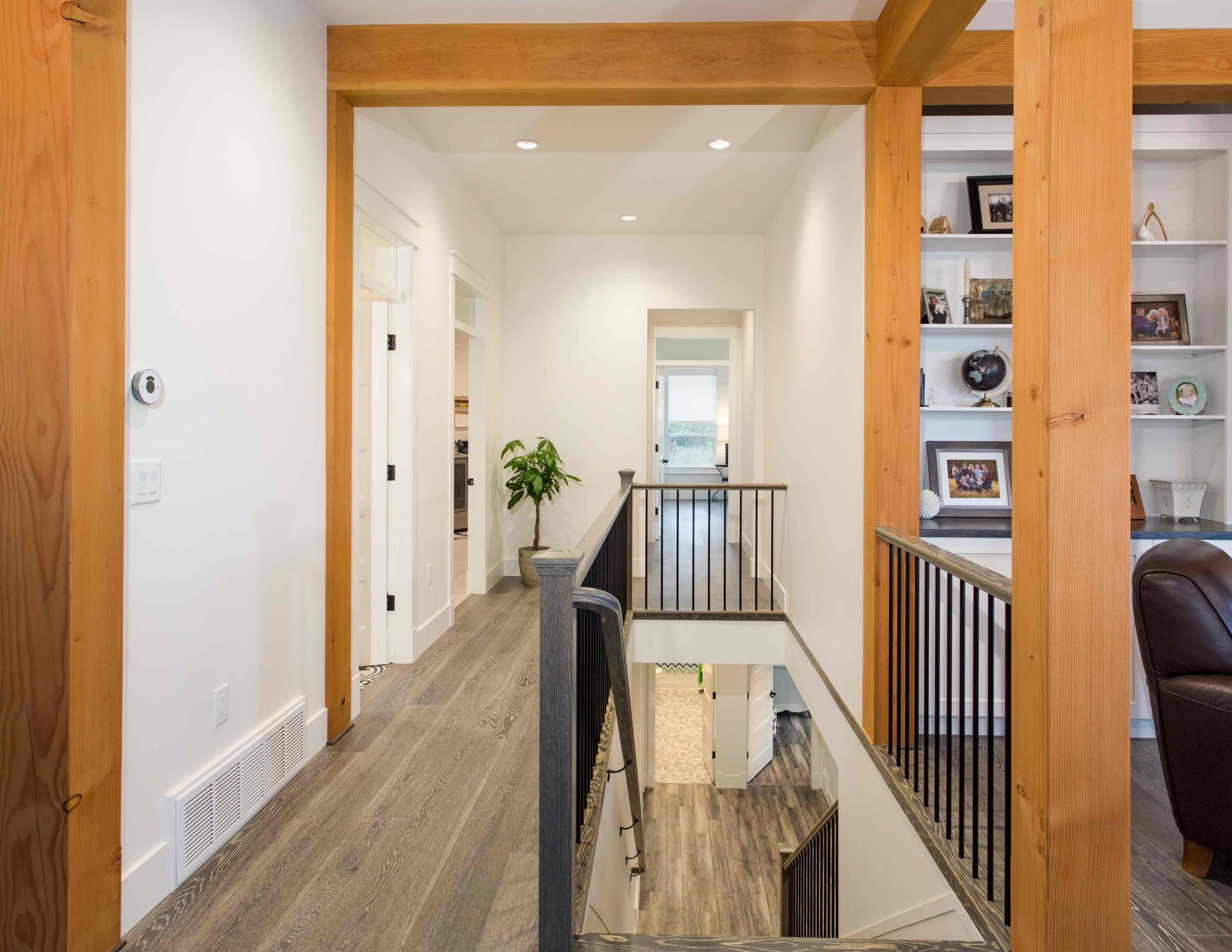Once you’ve decided to build a custom home, there are a number of choices that you need to make. While finding the best custom home builder should be a priority, it’s just as important to know what type of home you would like to build. These days, timber frame log homes are one of the most popular styles being built.
A timber frame log home is very similar to a post and beam home in that you can have the beauty of wood and timber features without building the entire home out of logs, and instead have them being used as just the main structural supports for your home. The big difference between post and beam and timber frame is that post and beam logs are round with a more natural and rustic feel, while timber frame logs are square.
3 Benefits of Timber Frame Log Homes:
#1 Open Concept and Strength
Over the last ten years, the open concept home has been growing in popularity, with expansive kitchens that overlook common living areas throughout the home. The strength of the timbers in a timber frame home allows for less load bearing walls, naturally creating an open floor plan free of obstructions. This type of framing has been used for centuries, especially in older churches, because of its strength and durability as well as its beauty.
#2 Waste and Sustainability
There is generally less waste in using the entire log in a timber frame home than using dimensional lumber for framing a traditional home. With conventional homes, the lumber is cut in the forest, hauled to a mill, cut to size, shipped to a distributor then to a local building supply store, and, once on the job site, will be cut again. Wood used for timber frame homes goes through much less handling, which means lower costs. Once at the site, the logs are fit to size, then some adjustments are made with minimal waste.
#3 Aesthetics
With a custom built log home you have the option of having your framing logs visible on the outer or the inner walls of your home. The sheer beauty and strength in being surrounded by perfectly placed timbers gives a sense of safety and comfort, while adding character and a design that is unique to every custom timber frame home. Additionally, there is more choice in where to place windows and doors with less load bearing walls and an open concept.
Some other benefits of timber frame log homes
- Research has shown that living in houses consisting largely of wood offers physical and psychological health benefits.
- Speed! An “average”-sized timber-frame home can be reassembled onsite within 3 – 5 days.
- Timber frames built with structural insulated panels (SIP) as insulation, are more efficient and stronger than fiberglass, costing less than half as much to heat and cool.
- The limited number of load bearing walls in timber frame structures allows for more flexibility and changes with the floor plan.
- A tendency to use less wood and sustainable materials when constructing timber frame log homes allow for a lower carbon footprint and lower cost to the environment. Recycled and/or local wood can be used, while what little timber waste there is can be further recycled.
3 Disadvantages of Timber Frame Log Home
As with any type of construction, there are of course going to be disadvantages to building a timber frame home:
#1 Vulnerability to Pests
Just like any home timber frames are susceptible to attacks from termites, woodworms and carpenter ants. Properly cleaning and caring for your home will help you avoid any longterm damage and repairs.
#2 Vulnerability to Forces of Nature
Timber frame log homes can become damaged from to the elements, such as the sun, fire and/or water, making it vulnerable to decay or fire damage. To avoid this you want to ensure that any timber on the exterior of your house has proper overhangs to help protect the wood. It’s also important to ensure any snow, water drainage, shrubs and trees are not close to your home. By doing a quick walk around your log home every spring and fall to inspect and look for any potential problem areas you can find them in time, repair them and avoid any longterm damage.
#3 Shrinking or Swelling of the Wood
As wood can naturally absorb water, if your timber frame log home is not sealed or finished properly, it can swell, shrink or shift with the changes in water absorption throughout your home. Working with a professional log and timber builder will help you ensure that the builders are taking into consideration that the logs may shrink, twist or shift and can ensure proper precautions are in place to ensure it does not effective the structure of your home.
Overall…
If you are considering building a custom log home but want to get away from the traditional full scribe log home, a timber frame may be a great option. Check out our Timber Frame Designs and Plans to give you some different ideas and concepts. Don’t be afraid to mix, match and integrate your own personal tastes as well, and if you have any additional questions feel free to contact us.


